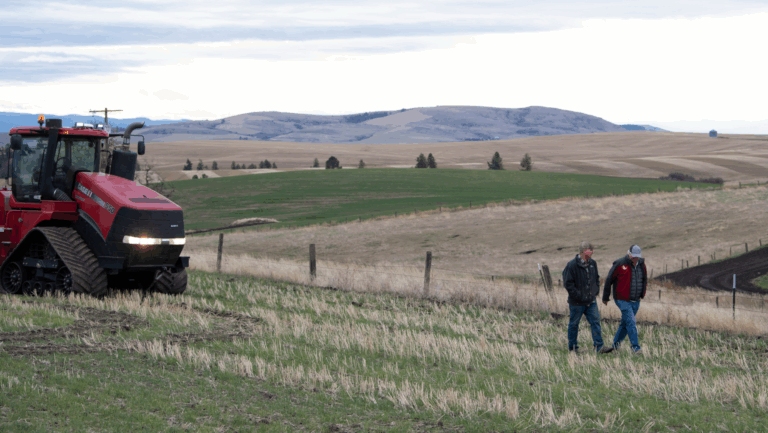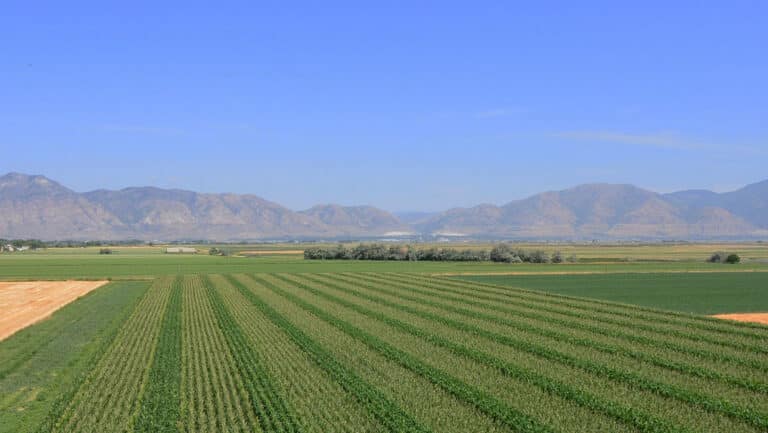AGAMERICA: THE TOP 5 METRICS FARMERS MONITOR ON THEIR FARM
Gathering important data helps farmers make informed decisions.
Agricultural metrics can provide deep, actionable insight into the success of your operation. If you want to increase yields, reduce costs, and optimize for future growth, it may be time to pay closer attention to the top five metrics farmers monitor on their farms.
1. Commodity Pricing
Without a thorough understanding of commodity prices and how they impact your business, you could quickly descend into the red and end up with more product than the market can sustain. No one can completely predict how commodity prices rise and fall, because the numbers change depending on supply, demand, and other external factors. But keeping your finger on the pulse of these trends will allow you to make better decisions when it comes time to decide how many crops to plant or animals to raise.
A variety of news and research sources provide a steady stream of information about commodity and futures markets. Future Source, The Hightower Report, and Inside Futures are reliable sources for general market news and commentary. While Iowa Grain provides expert insight on the grain and livestock markets. These are just a few sources that provide consistent and readily available information on commodity pricing.
2. Working Capital
Otherwise known as the amount of money available for operational expenses, working capital is a farmer’s bread and butter. Your working capital to gross revenue ratio can vary depending on whether you have a farming or ranching operation. The general rule of thumb is to aim for 30 percent or higher for crop farms and 20 percent or higher for livestock farms. Numbers may ebb and flow, but you never want to put yourself in a situation where factors outside of your control force you to make poor financial decisions.
Keeping a close eye on your working capital allows you the freedom to not only make sound decisions in the event of an emergency; it also opens the door for opportunities to invest in things like field analyzers, weather forecasting services, and machine learning technologies.
3. Debt-to-Asset Ratio
Debt-to-asset ratio is a farm management metric that each farmer and rancher should know, understand, and monitor. This ratio measures the degree to which your assets are financed by debt. To calculate this number and gain a better understanding of operational risk exposure, divide assets by liabilities and multiply by 100.
Having a high debt to asset ratio could mean you are treading in dangerous waters. If a vital piece of farming equipment breaks down in the weeks leading up to harvest, this could put you in a position where you don’t have the funds to repair or replace it—or have the option to apply for additional financing. Knowing these numbers and maintaining a healthy ratio will allow you the flexibility to take on additional debt in the future, should you need it for a season.
4. Asset Turnover Ratio
The asset turnover ratio measures how efficiently your assets are generating value, which contributes to the measure of gross income. Farms and ranches with a higher asset turnover ratio are using their assets more efficiently, and therefore making better use of their time and resources. This particular farm metric is crucial to understand and track because low numbers could be a sign of poor production management.
Some ways to improve your asset turnover ratio are to increase sales, increase the efficiency of production and sales, sell assets you don’t use, and accelerate the collection of money from customers.
Because farming and ranching are known to be volatile industries, taking these steps may help protect you against unforeseen circumstances. For instance, the more efficiently you can run your operation, the higher your profit margin will be. This will give you a financial cushion should your operation encounter low prices, natural disasters, or unanticipated expenses.
5. Price of Goods in Region
Market prices for corn, soybean, wheat, and livestock can move up and down over the course of a single day, which is why it is valuable to use smart technology to monitor the market and keep an eye on the price of goods in the region.
There are various browser-based options and RSS feeds like Feedly that you can subscribe to. You can also take advantage of podcasts like the Farm Futures Market Update that allows you to stay informed as you’re out in the field. Some brokerage firms will even send you commodity updates via text message if you prefer direct notifications.
Metrics Move Us Forward
Smart technology surrounds us everywhere we go, and agriculture is no exception. Through algorithmic tools and machine learning, the agricultural sector has a unique opportunity to thrive with predictive modeling techniques and data-driven solutions.
You can use these technologies to do everything from predicting weather patterns and supply and demand to analyzing the precise moment to plant your next row of crops for the highest yields. The use of ag technology is already having a positive impact. Farmers using precision technology have seen an 11 percent increase in corn yields and a 9 percent reduction of input expenses.
No matter how you choose to incorporate big data and smart technology into your operation, you can rest assured that the combination of tried-and-true strategies and innovation will help move you toward a more productive future.
Financial Health
AgAmerica Lending is here to help you understand your options when it comes to navigating your financial metrics. Our spectrum of land loans provide you with custom solutions designed specifically for your operational needs. Speak to one of our Relationship Managers today to discuss the financial health of your operation.






